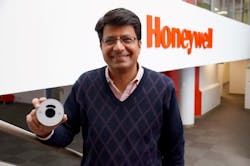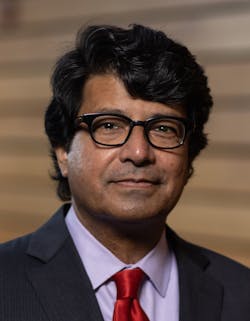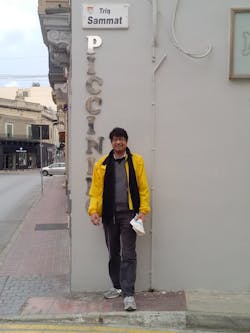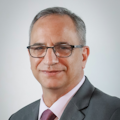Samad eventually found his way into control during the early stages of a 30-year career with Honeywell. He also served terms as president of the American Automatic Control Council and the IEEE Control Systems Society. Since then, he retired from corporate life, and now teaches at the University of Minnesota.
Samad joined the Honeywell Computer Sciences Center after graduating from CMU. “Honeywell was a major manufacturer of computers, and this center was dedicated to the computer business,” Samad says. “Six months after I joined, Honeywell announced it was getting out of the computer business.”
His boss at the time told him, "You had offers from some other places before you came here and we aren’t going to be doing computers anymore, so you should see if you can refresh those offers."
That was the first twist of fate in his career, but many others would soon follow.
Samad got into neural networks, which at the time was at the peak of one of the several hype cycles the discipline has gone through. He says it didn’t take long for him to realize that emerging AI technologies had a connection with control—in which domain, of course, Honeywell was a major player. “I was working with people who knew a lot more about control science and engineering than I did,” he recalls.
He was also beginning to recognize there were many issues that the AI community was trying to address in ad hoc, anecdotal ways. “The attitude was often, ‘Let's try this heuristic and see if it works,’” he describes. “But control, as I learned to appreciate, was all about rigor and systematically thinking things through. It was having a mindset that imparted confidence in what you were doing, rather than trial and error. So I decided I was in the right place to learn more about control and explore its connections with AI.”
For a long time after, he worked on applying neural networks and other technologies, such as genetic algorithms and fuzzy logic and evolutionary computing, to control systems.
Samad adds that being at Honeywell immersed him in many different application areas. He worked in aerospace, process automation, manufacturing, homes and buildings, automotive, power systems and smart grids. Some of his work was internally funded. Other work was funded by external agencies, such as the Defense Advanced Research Projects Agency (DARPA) and the Electric Power Research Institute (EPRI).
With DARPA, he led a project to develop control systems for the first flight of a fleet of coordinated unmanned aerial vehicles (UAV) in an urban environment. “It was a deserted military base with multiple, heterogeneous UAVs flying coordinated routes for surveilling the whole space,” he recalls. “We were bringing model predictive control (MPC) ideas into these different fields where there wasn't as much appreciation for control.”
Samad also recalls several interesting projects in the second half of his career at Honeywell. He led an initiative on carbon capture and sequestration (CCUS) before it became the growing endeavor it’s become these days. “This was over a decade ago, and we undertook a deep dive into the technology and market opportunities for CCUS,” Samad says. “Many more companies, including Honeywell, are now active in this area.”
Samad also led a sensing and control workstream in the Obama Administration's advanced manufacturing partnership program. There, he worked with a team of national experts to identify outstanding challenges and priorities related to sensing and control. The goal was to elevate manufacturing in the U.S. Smart grids was another hot topic around that time. Samad was elected to the governing board of the Smart Grid Interoperability Panel, convened by the U.S. government, where he served as the industry representative for the residential, commercial, and industrial customer base.
He retired from Honeywell seven years ago, and decided to join the University of Minnesota, where he holds a Honeywell-endowed chair in technology management. He describes the Technological Leadership Institute at the university as a think tank and professional education organization. Samad is the director of graduate studies at TLI, which has programs in technology management, medical devices, security technologies, and electrification.
About the Author

Leaders relevant to this article:



